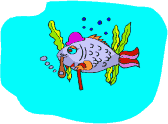 |
See Zeiner's new online
catalog. New items are being added regularly. |
Click here for Zeiners new secure online catalog
Submitted by Ned Kehde - July 29, 2002
Every June, a flotilla of anglers gathers almost daily on the
submerged
humps and mud flats of Clinton, Coffey County, Hillsdale, and
Melvern lakes.
They come to prey upon the walleye.
The walleye begin invading these environs in May. Their mission
is to
devour the larvae and pupae of aquatic insects. And as increasing
numbers
of walleye arrive at these haunts, an increasing number of anglers
follow
suit.
Mike Suit and John Swenson, both of Lawrence, began chasing
the walleye
at Melvern in mid-May. But mid-May's unseasonably cold weather
kept the
water temperatures around 60 degrees and stymied many of the
insect hatches.
Consequently, the bulk of the walleye remained in deep water.
In fact,
David Schmidtlein of Topeka caught several mid-May walleyes at
Melvern in 28
feet of water, and he characterized the fishing as lackluster.
Likewise,
Suit and Swenson found the fishing in the shallower lairs at
Melvern to be
trying, but Swenson managed to entice a six-pounder to engulf
a jig and
nightcrawler.
Despite the cool water, Suit and Swenson caught a goodly number
of small
walleye at Clinton that gamboled about the series of humps and
adjacent mud
flats that lie east and south of Clinton Point, but they found
it nearly
impossible to catch one that was longer than 15 inches.
Even though Clinton's walleye were small, they were numerous.
And as
more and more of these small walleye made feeding forays across
Clinton's
flats and humps, more and more anglers arrived
For instance, shortly after sunrise on Memorial Day, 63 boatloads
of
walleye anglers plied the underwater topography near Clinton
Point, hoping
that the bigger walleye would appear.
Schmidtlein was one of those hopeful anglers, but he was disappointed
by his catch of 18 small walleye and two that exceeded 15 inches
in length.
He blamed the cold water for his paltry catch.
However, the hot weather that hit immediately after Memorial
Day pushed
area thermometers into the 90s and water temperatures well into
the 70s
stirred the aquatic insect and some bigger walleye into action.
And on May
29 Skip Harrell of rural Lawrence finally caught a limit of keeper-sized
of
walleye at Clinton by employing a jig and nightcrawler, signaling
the start
of 2002 walleye season.
At Clinton, Melvern and Hillsdale, a jig tipped with a nightcrawler
is
the day in, day out favorite lure of most walleye anglers in
late spring and
early summer. But at Coffey, a jig tipped with a minnow is periodically
more
effective than a one adorned with a nightcrawler.
There is also a growing contingent of anglers who allure scads
of walleye
by casting a small crankbait around wind-blown rock piles and
points. This
tactic is especially effective at Melvern, beginning once the
walleye start
to prey on gizzard shad and other young fish in late June or
early July.
Chris Ogburn of rural Ottawa began wielding a crankbait for
walleye more
than a decade ago, and he won several Kansas Walleye Association
tournaments
by deftly manipulating a tiny Lindy Shadling in the wind.
Ogburn and his fellow crankbait aficionados speculate that
the wind blows
the zooplankton across the shallow rocks, and the shad come to
feed upon the
zooplankton. Then the walleye chase the shad, and, of course,
the anglers
arrive, armed with small crankbaits, to pursue the walleye.
According to Ogburn, a crankbait will catch walleye from about
now till
early October, but the fishing is seldom as sterling in the ensuing
months
as it is in June.
Back to
Ned Kehde Index | Kansas
Angler Home | Anglers Sharing Stories
|


